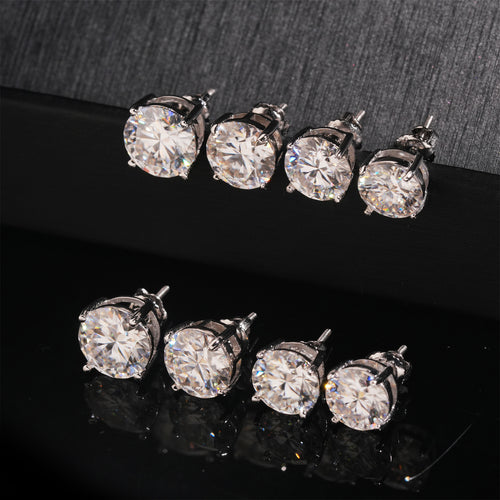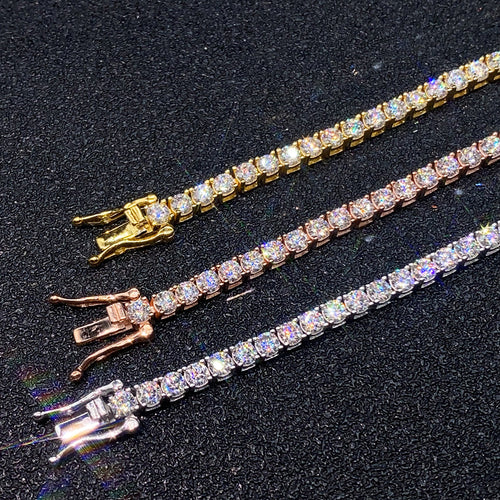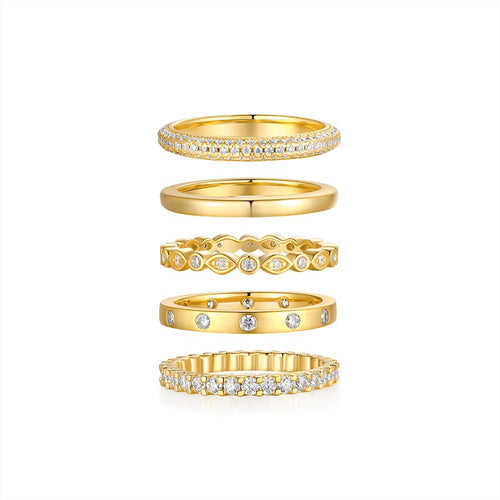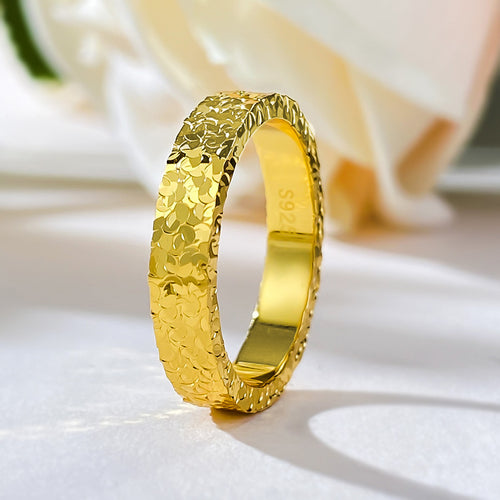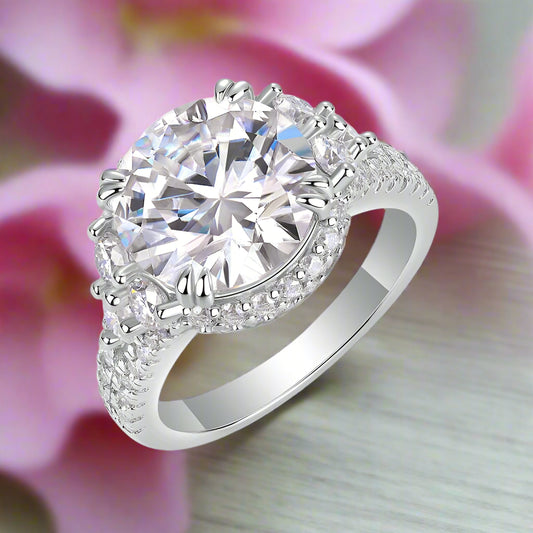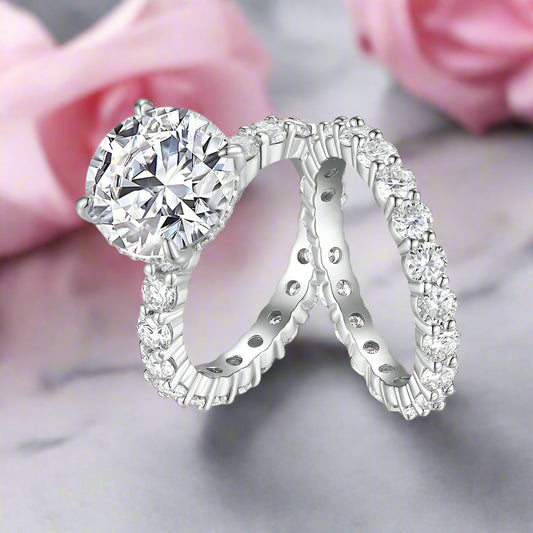When it comes to sparkling stones, cubic zirconia (CZ) vs. diamond is one of the most common comparisons. To the untrained eye, they may look nearly identical, but these gemstones differ greatly in composition, brilliance, durability, and value. Whether you’re shopping for an engagement ring, fashion jewelry, or simply want to know how to tell the difference, this guide breaks down everything you need to know.
What Is Cubic Zirconia?

Cubic zirconia is a lab-created gemstone made from zirconium dioxide. First developed in the 1970s, it was designed as a cost-effective alternative to diamonds. CZ is widely popular because it mimics the look of a diamond without the hefty price tag. However, it’s important to note that cubic zirconia is not a natural diamond nor the same as lab-grown diamonds, which are chemically identical to mined diamonds.
What Is a Diamond?

Diamonds are formed from pure carbon under intense heat and pressure deep within the Earth’s mantle. They can also be created in laboratories through processes that replicate these natural conditions. This unique composition gives diamonds their unparalleled hardness (10 on the Mohs scale) and famous brilliance.
Cubic Zirconia vs. Diamond: Key Differences

1. Appearance & Sparkle

-
Diamonds have a higher refractive index, producing intense brilliance and sharp flashes of light (known as “fire”).
-
Cubic zirconia sparkles differently, often showing a more rainbow-like effect, which can appear artificial in certain lighting.
-
Diamonds typically feature small inclusions and slight color variations, while CZ stones are usually flawless and perfectly clear.
2. Durability

-
Diamonds are the hardest natural substance on Earth, resistant to scratches and everyday wear.
-
Cubic zirconia, at 8–8.5 on the Mohs scale, is softer and more prone to scratching, chipping, and dulling over time. CZ can also become cloudy with exposure to chemicals and frequent use.
3. Price

-
Diamonds vary in price depending on cut, clarity, carat, and color. A 1-carat diamond often costs thousands of dollars.
-
Cubic zirconia is extremely affordable, with a 1-carat CZ stone costing only a few dollars. However, CZ has little to no resale value, while diamonds often hold or increase their worth over time.
How to Tell the Difference Between Diamond and Cubic Zirconia

Even though cubic zirconia is crafted to resemble diamonds, there are clear ways to tell them apart:
-
Brilliance vs. Fire: Diamonds reflect more white light, while CZ gives off stronger rainbow flashes.
-
Flaws: CZ stones are usually flawless; diamonds often have tiny natural inclusions.
-
Color Over Time: CZ can appear gray or yellowish and may cloud with wear, while diamonds retain their sparkle.
Trained jewelers use specialized tools, but even casual observers can notice differences when the stones are compared side by side under good lighting.
Should You Choose Diamond or Cubic Zirconia?

When Diamonds Are the Better Choice:
-
Engagement rings & lifelong jewelry: Durable enough for daily wear.
-
Investment & heirlooms: Hold long-term value and can be passed down generations.
-
Symbolism: Traditionally represent love, commitment, and rarity.
When Cubic Zirconia Makes Sense:
-
Fashion jewelry: Perfect for trendy or seasonal styles.
-
Travel jewelry: Many people wear CZ replicas when traveling to avoid losing valuable diamonds.
-
Budget-friendly option: Enjoy the diamond look at a fraction of the cost.
-
Occasional wear: Great for jewelry pieces not worn every day.
Cubic Zirconia vs. Diamond FAQ

1. Is cubic zirconia a real diamond?
No. Diamonds are made of carbon, while cubic zirconia is made of zirconium dioxide. CZ is a diamond simulant, designed to imitate the appearance but not the chemical or physical properties of a diamond.
2. Can you tell cubic zirconia from a diamond with the naked eye?
At a glance, especially in smaller sizes, it can be difficult. But upon closer inspection, CZ often looks more glassy, shows stronger rainbow colors, and may appear cloudy over time.
3. Does cubic zirconia last forever?
Cubic zirconia is beautiful but less durable than diamonds. With frequent wear, it can scratch, lose luster, or discolor, unlike diamonds, which remain brilliant for decades.
Final Thoughts: Diamond vs. Cubic Zirconia
The choice between cubic zirconia and diamonds depends on your budget, lifestyle, and purpose. Diamonds offer unmatched durability, timeless beauty, and investment value, making them ideal for engagement rings and heirloom pieces. Cubic zirconia, on the other hand, is perfect for affordable, fashionable, or temporary jewelry.
Whichever you choose, understanding the differences ensures you pick the stone that best fits your needs.


